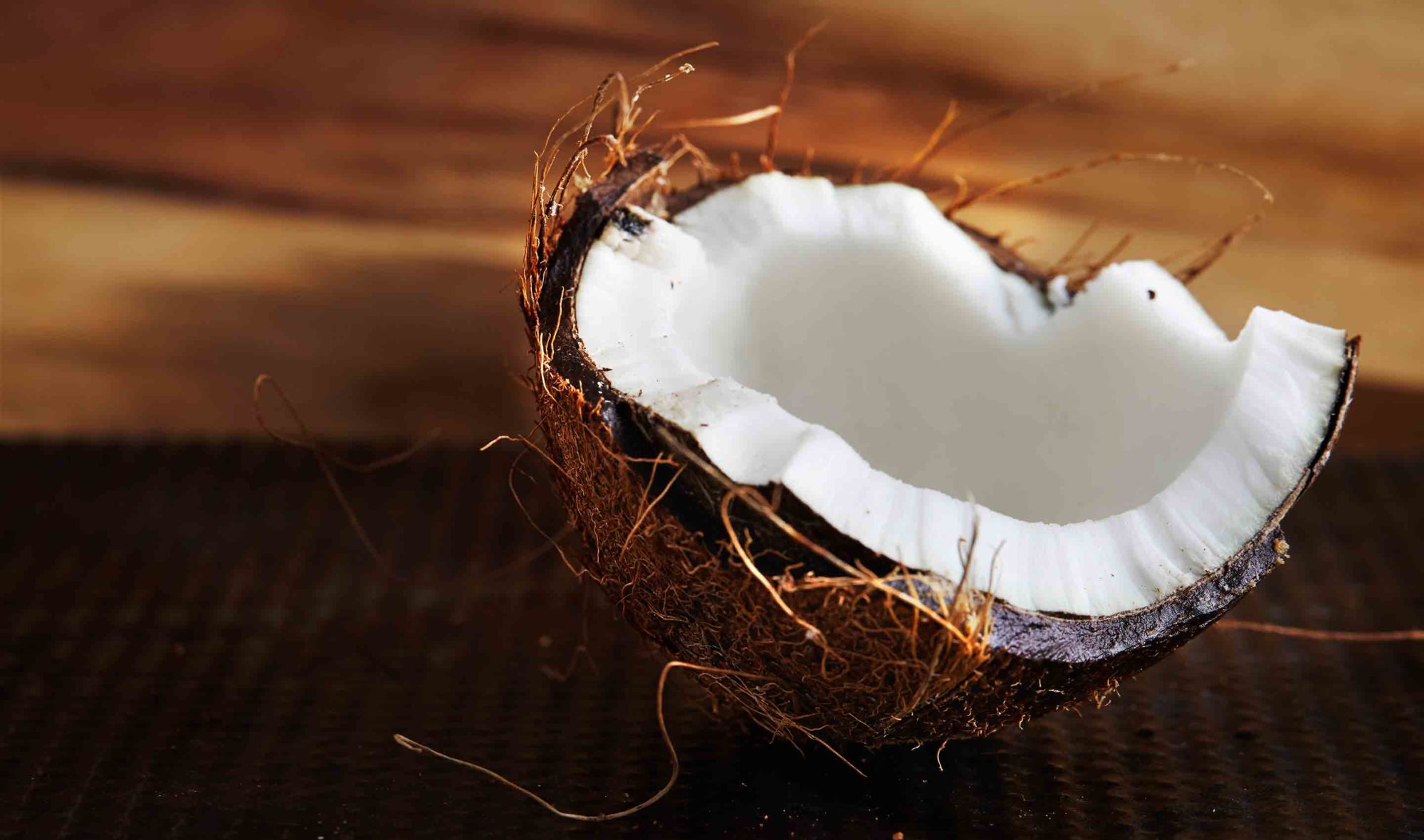
📣 PN Level 2 NOW OPEN: Get better client retention, results, and referrals. Save 44% + BONUS this week.

📣 PN Level 2 NOW OPEN: Get better client retention, results, and referrals. Save 44% + BONUS this week.

Coconut butter is a rich spread made from pureed, raw coconut meat. It is an excellent source of healthy fats, with 18g of fat in just two tablespoons. Coconut butter is also rich in minerals including potassium, phosphorus, and magnesium. Coconut butter comes in pre-packaged jars, or you can make it from scratch using pure coconut. Store coconut butter at room temperature. Enjoy it as a spread or topping, or use it in baking.
Coconut butter is a rich spread made from pureed, raw coconut meat.
Coconut butter is white, thick, and creamy. It is soft at room temperature, but hardens when cooled. It has a rich coconut taste and aroma.
Two tablespoons of coconut butter have about 210 calories, 2.0g of protein, 8.0g of carbohydrates, 5.0g of fiber, 2.0g of sugar, and 18.0g of fat.
Coconut butter is rich in minerals including potassium, phosphorus, and magnesium.
Coconut butter comes in pre-packaged jars. You can find it at your local health food store with the nut butters.
Don’t confuse coconut butter with coconut oil; though similar, coconut butter has a richer, more fulsome texture. It also responds to heat differently and generally stays solid at room temperature (unlike coconut oil).
Much like nut butters, it’s easy to make your own coconut butter. Purchase a bag of unsweetened coconut (full-fat) and blend it in your food processor or blender for 5-10 minutes (the time depends on the power of your appliance). Once it’s creamy and smooth, transfer it to a mason jar or other sealed container.
Store coconut butter in the cupboard. Refrigeration is not recommended. Note that coconut oil separation may occur, causing a white, solid top layer. If this happens, simply stir the coconut oil and blend it all back together with a spoon (this is a similar to the oil separation of natural peanut butter). If you have trouble blending it, warm it slightly — try 5 to 10 seconds in the microwave.
Coconut butter requires little to no preparation. Depending on the time of year or climate you live in, you may need to heat the coconut butter in the microwave for up to 10 seconds to soften it. Once soft enough to handle, you can spread it on toast, use it in recipes, enjoy with fruit, or add it to desserts.

If you like the combination of peanut butter and chocolate, these are the perfect treat for you! The rich peanut chocolatey flavor and gooey texture are sure to please your tastebuds!
Prep Time: 15 minutes Cook Time: 0 minutes Yield: 20-24
Put the coconut butter in a microwave-safe bowl and microwave for 20 seconds or until very soft.
Put all ingredients, with the exception of the crushed peanuts, into your high power blender or food processor. Process until smooth. Add the crushed peanuts and pulse to mix in. If you don’t have a high power blender or food processor, simply add all ingredients to a mixing bowl and mix very well.
Note: If you want to make these treats extra chocolatey, add another 1-2 tbsp of cocoa powder (for best taste, be sure to use a good quality cocoa powder).
Line two cookie trays with wax paper. Scoop the batter into a piping bag with a large tip. Carefully pipe out bite-sized chocolate kisses (note: that they will look different depending on which piping tip you select).
Let set in the fridge or the freezer for 3-4 hours before serving (note: in the fridge, these will be slightly gooey, if you want a more solid consistency, put them in the freezer – they make for a great frozen treat too).
Store leftovers in the fridge or the freezer.
Enjoy!
Precision Nutrition’s Encyclopedia of Food expands every single month as we highlight new foods and showcase beautiful food photography. If you’d like to stay up to date, simply click this link. From there, we’ll send you a FREE copy of our recipe book. We’ll also let you know when new and delicious foods are added to the site.
Coconut butter is a rich spread made from pureed, raw coconut meat. It is an excellent source of healthy fats, with 18g of fat in just two tablespoons. Coconut butter is also rich in minerals including potassium, phosphorus, and magnesium. Coconut butter comes in pre-packaged jars, or you can make it from scratch using pure coconut. Store coconut butter at room temperature. Enjoy it as a spread or topping, or use it in baking.